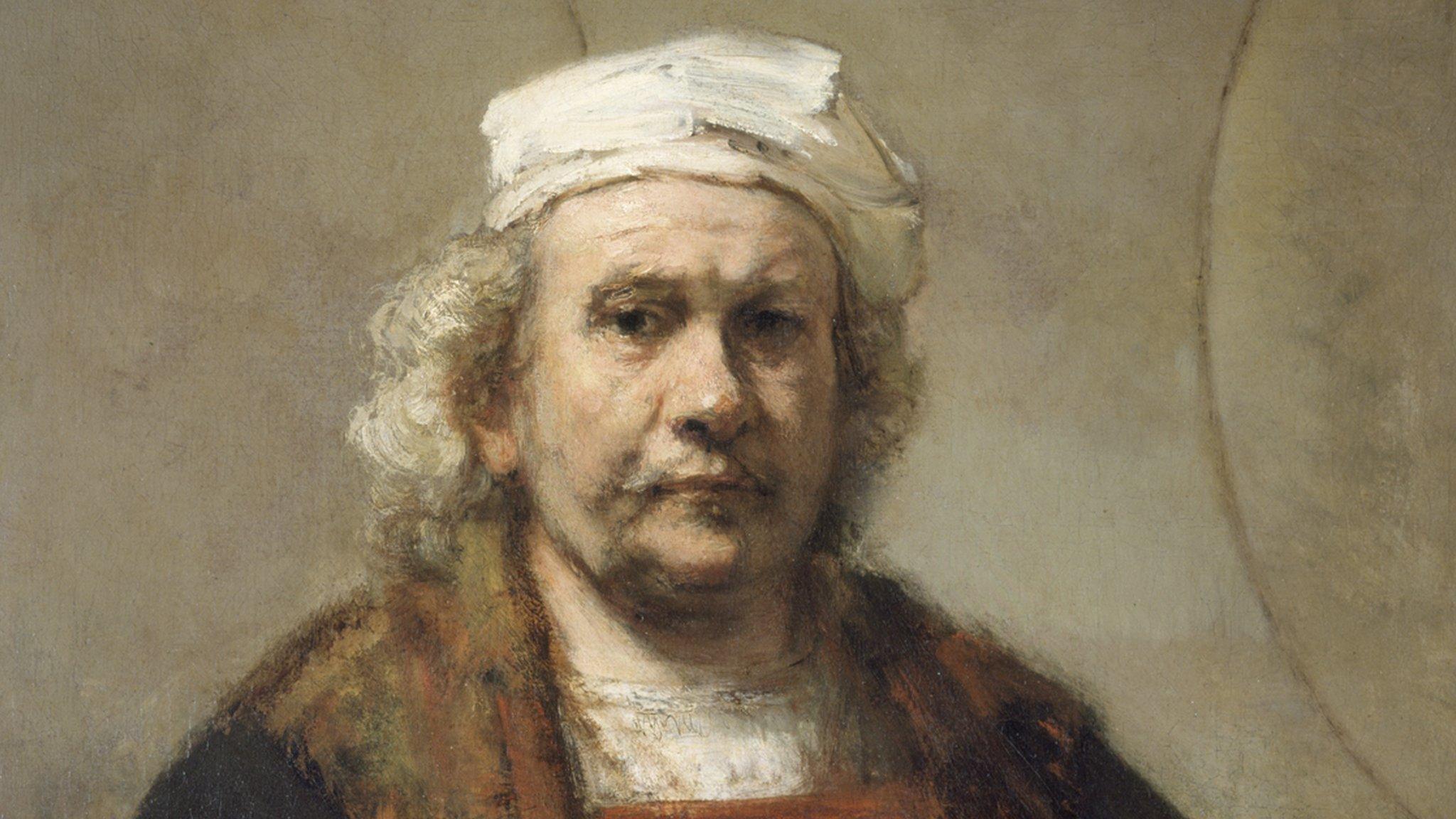Rembrandt's Night Watch to be restored in public
- Published
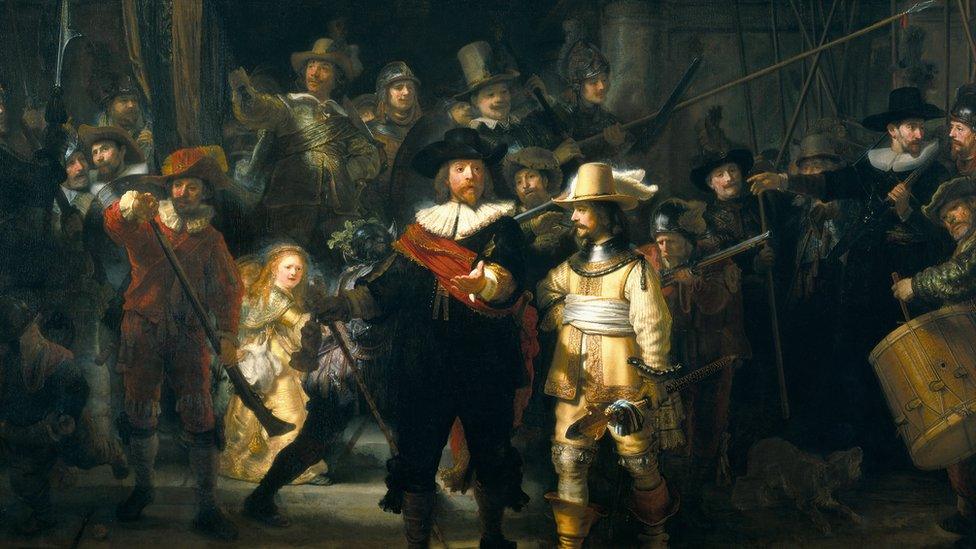
The masterpiece is due for maintenance - which will be streamed online
Rembrandt's masterpiece The Night Watch is to stay on public display as part of the Rijksmuseum's biggest restoration project in its history.
The Amsterdam museum says throughout the process the 1642 work will be encased in a "state-of-the-art clear glass chamber" on the museum floor.
In a further attempt to shed light on the process, it will be streamed online for anyone to see.
Rembrandt's group portrait is considered his most ambitious work.
The Night Watch is almost 4m tall and 4.5m wide (12.5 x 15 ft) - and weighs a whopping 337kg (743lb).
"The Night Watch is one of the most famous paintings in the world. It belongs to us all," said museum director Taco Dibbits.
"That is why we have decided to conduct the restoration within the museum itself - and everyone, wherever they are, will be able to follow the process online."
Allow YouTube content?
This article contains content provided by Google YouTube. We ask for your permission before anything is loaded, as they may be using cookies and other technologies. You may want to read Google’s cookie policy, external and privacy policy, external before accepting. To view this content choose ‘accept and continue’.
The painstaking process is likely to take years and a great deal of money - and all done in the light of day.
Before it begins in July 2019, The Night Watch will feature in an exhibition marking 350 years since Rembrandt van Rijn's death.
Why is The Night Watch important?
The Night Watch was supposed to be a group portrait - a pretty popular form of art in the Dutch Golden Age for well-to-do gentlemen and their various societies.
But Rembrandt broke all the rules, creating a seminal work in the history of art.
At a time when group portraits were largely composed of people standing or sitting in a posed tableau, Rembrandt filled his painting with movement and action.
The use of dramatic lighting - or chiaroscuro, the use of light and dark - is a celebrated example of the age, and its fame led to The Night Watch being used to teach students the world over about the technique.
In fact, the painting was originally not called The Night Watch – and it is not even set at night.
Instead, it was known as Militia Company of District II under the Command of Captain Frans Banninck Cocq.
It was commissioned by the captain - who was also the mayor of Amsterdam - and shows his civic guard.
Its more modern title comes from the painting's varnish, which darkened over the years, dimming the original colour until it looked like the scene was set at night.
It has since been brightened somewhat in previous restorations.
Sliced, splashed, and fading
The museum says that with the latest technology, they can understand what is happening to the masterwork - pointing to one example of the dog in the painting, which it turning white with age.
To begin with, the painting will be thoroughly examined before deciding what, it any, changes should be made.
But this is a painting whose story is full of changes.
And it has needed a few, having been attacked three times last century.

Detail from "A madman attacks Rembrandt's Night Watch" illustration in Italian newspaper La Domenica del Corriere, 22 January 1911
In January 1911, a man attacked the painting with a knife, doing minor damage which was repaired.
A similar act of vandalism in 1975 left large slices in the fabric, requiring extensive and painstaking restoration over the course of several years - the last major restoration work done.
Then, in 1990, a man sprayed a chemical on to the painting, doing only minor damage to the varnish on the surface which was relatively easy to repair.
The latest restoration project will be its first major restoration project in decades - but this time no emergency treatment will be required to repair physical damage.
- Published10 June 2014
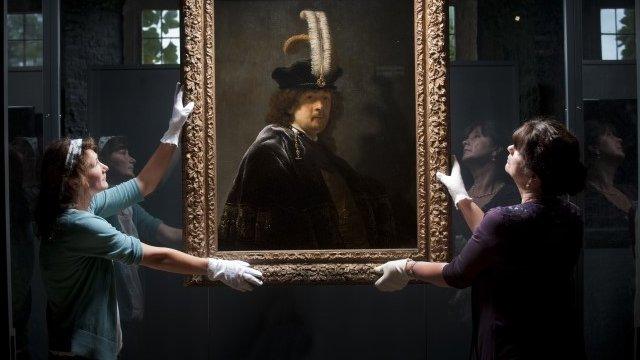
- Published30 September 2015
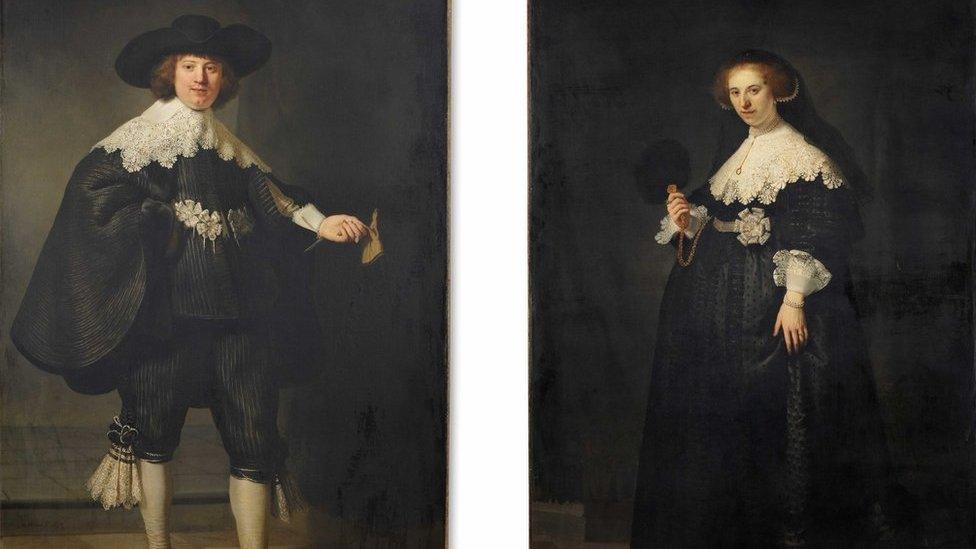
- Published16 October 2015
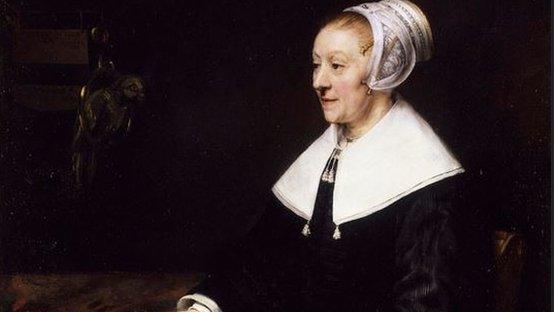
- Published16 July 2013

- Published14 October 2014
